IRL HOMEN


The French-South African International Research Laboratory (IRL) HOMEN (2019-2023) is coordinated on the French side by Dominique Gommery (CR2P) and on the South African side by Nonhlanhla Vilakazi (University of Johannesburg).
Keywords: South Africa, Plio-Pleistocene, Karst, breccia, evolution, paleobiodiversity, paleoenvironment, biochronology.
Three regions in Africa have yielded potential ancestors and/or cousins of humans several million years old, East Africa (Ethiopia, Kenya, Malawi and Tanzania), Chad and South Africa. It is in this last country that the first australopithecine was discovered in 1924 (the Taung child, Australopithecus africanus).
Still in South Africa, several karst sites a few dozen kilometers from Pretoria and Johannesburg, the Cradle of Humankind, have yielded Plio-Pleistocene faunas (period between -5 million years and -800,000 years before our era), including potential human ancestors and cousins. The Cradle of Humankind is classified as a World Heritage Site by UNESCO since 1999.
These potential ancestors and cousins are very dependent on certain environmental conditions. There appears to have been major environmental changes in East Africa during the Plio-Pleistocene Transition, dated to about 2.7 million years ago. Other earlier climatic changes may have been more pronounced in southern Africa.
The HOMEN International Research Laboratory conducts field and laboratory research to understand the evolution of biodiversity in the Cradle of Humankind along four themes:
Characterization of paleobiodiversity.
Biochronology and physical chronology.
Reconstruction of paleoenvironments.
Biogeographic zone extension/decrease and/or in situ evolution.
The project will allow a better understanding of the evolution of biodiversity during the Pliocene and early Pleistocene and will probably also provide information on the establishment of the present biodiversity.
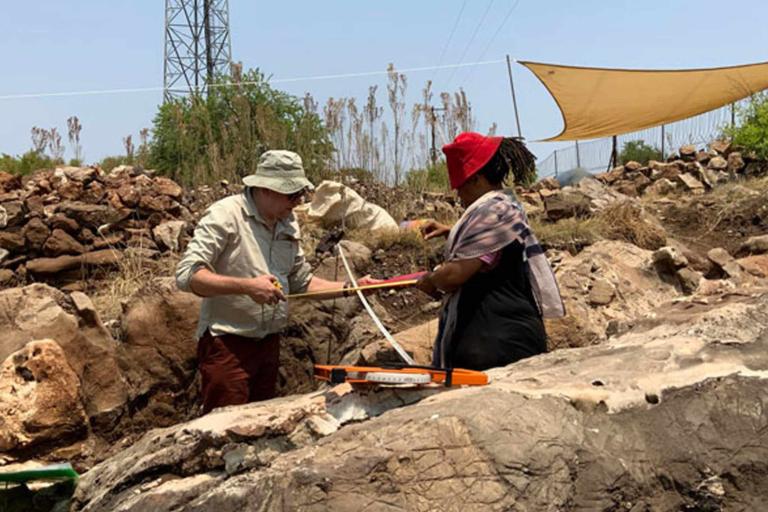
Séance de cartographie à Aves Cave I (Bolt’s Farm) en octobre 2022.
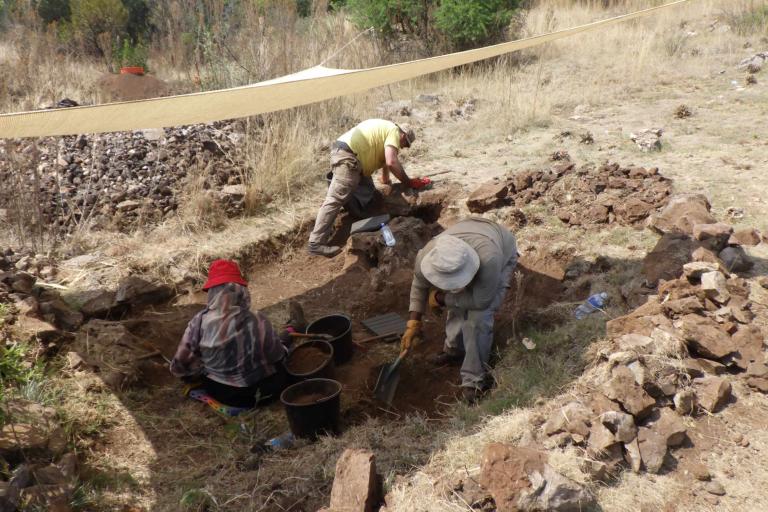
Vue d’une zone de fouille à Aves Cave I (Bolt’s Farm) en octobre 2022.

Vue d’Aves Cave I (Bolt’s Farm) en fin de fouille en octobre 2022.
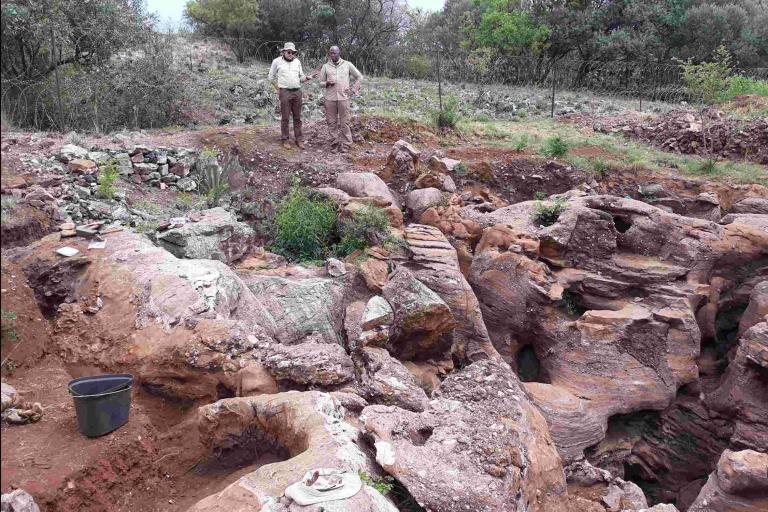
Vue de fouille à d’Aves Cave I (Bolt’s Farm).
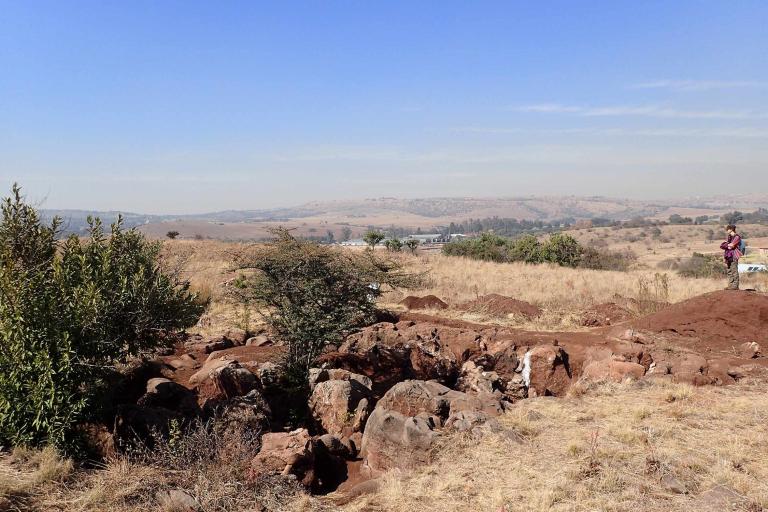
Vue de la fouille à Brad Pit (Bolt’s Farm).

Vue de la fouille à Brad Pit (Bolt’s Farm).
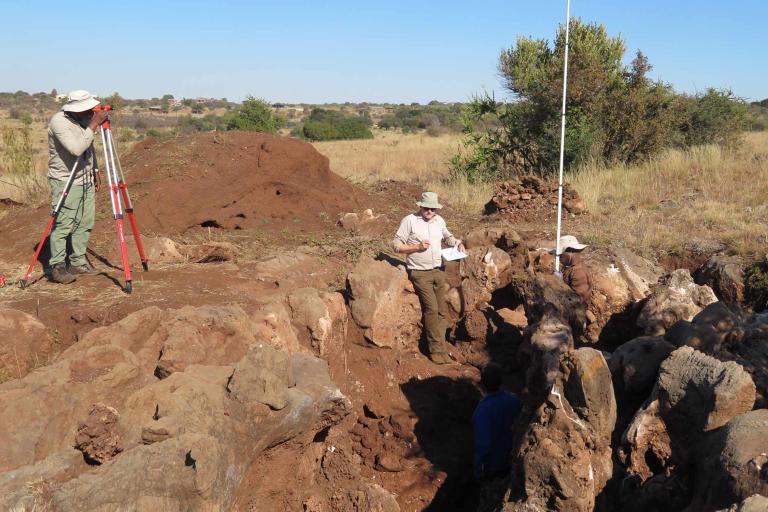
Vue de la fouille à Brad Pit (Bolt’s Farm).

Tri des refus de tamisage à Brad Pit (Bolt’s Farm).
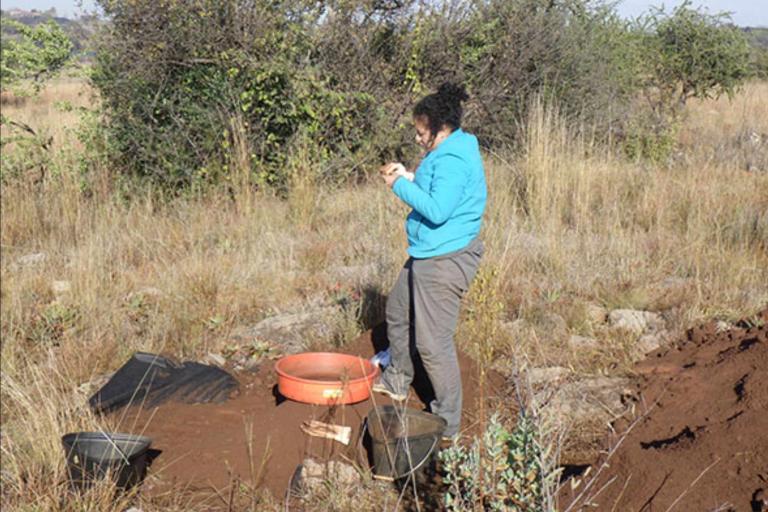
Tri des refus de tamisage à Brad Pit (Bolt’s Farm). © D. Gommery
These activities take place at Bolt’s Farm in the Cradle of Humankind in synergy with the research conducted by the MPFSA (Mission Paléoanthropologique Franco-Sud-Africaine). To understand the impact of environmental change, it is necessary to be able to study faunas of different ages between the Lower Pliocene and the Middle Pleistocene Transition (between -5 and -0.8 million years).
Fossils from this period are quite rare in collections, so it is important to discover new ones and this is possible at the Bolt’s Farm sites. It is also an opportunity to better understand the geological context of the formation of fossil deposits.
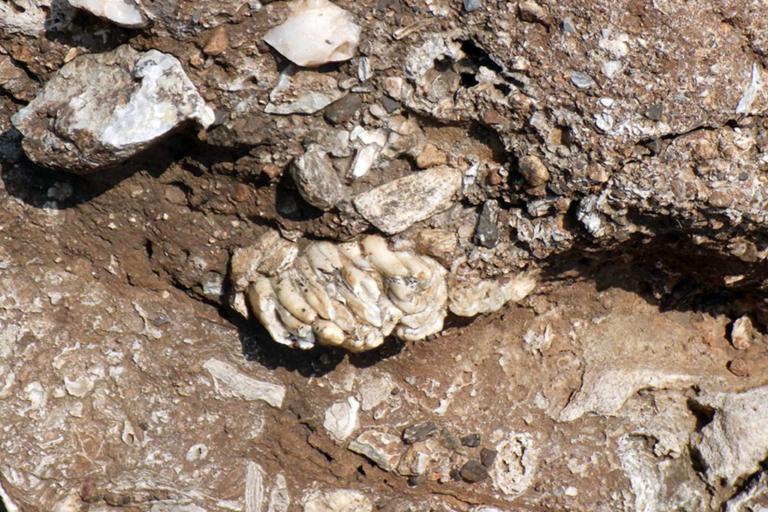
Dents de suidé in situ à Aves Cave I (Bolt’s Farm).
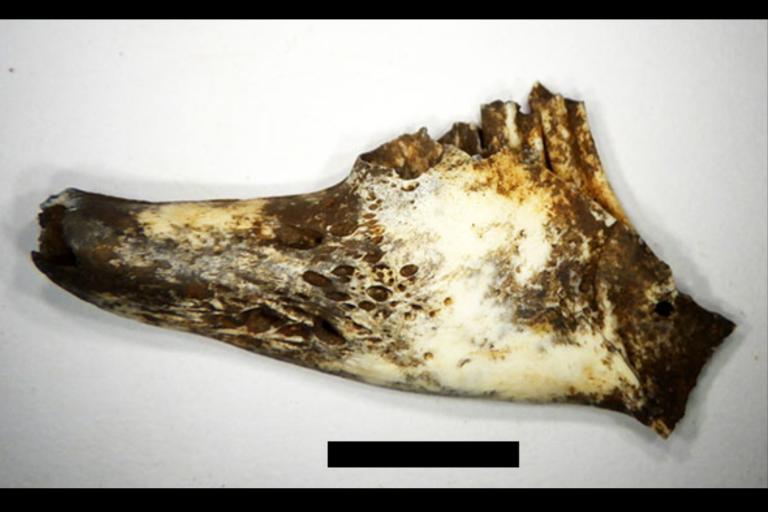
Hémi-mandibule de lagomorphe découverte à Brad Pit A (Bolt’s Farm).
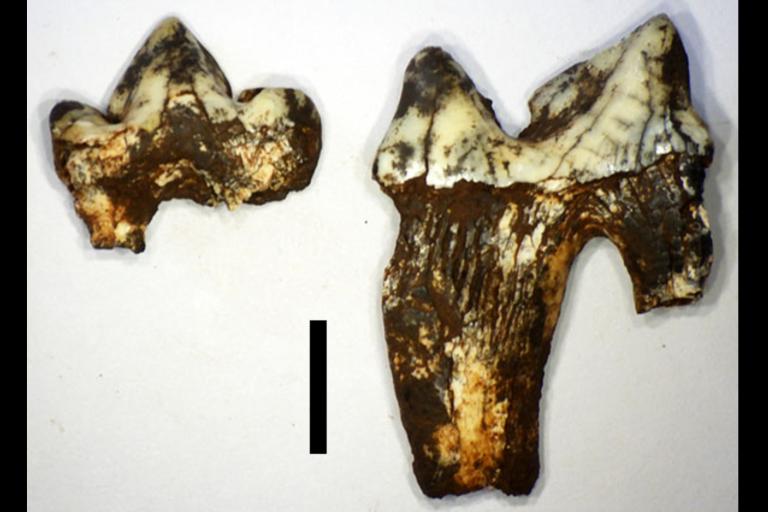
Dents inférieures de carnivores découvertes à Brad Pit A (Bolt’s Farm).

Molaire supérieure de Mylomygale spiersi provenant de Brad Pit A.
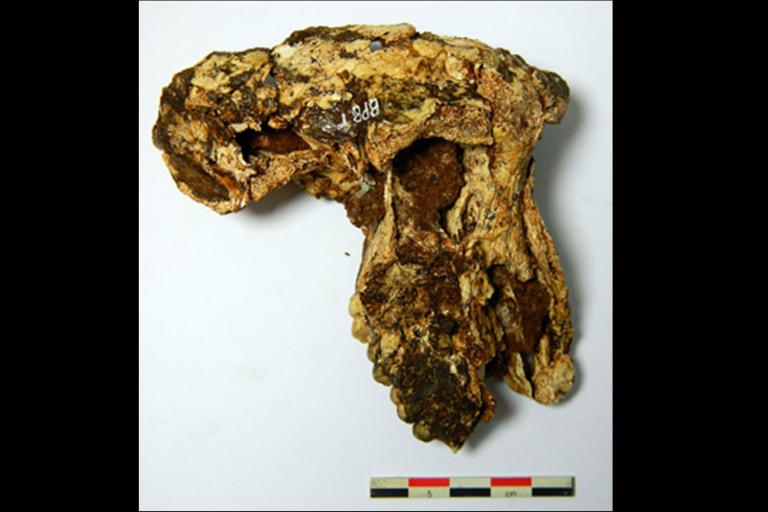
Crâne de primate (Parapapio broomi) provenant de Brad Pit B (Bolt’s Farm).
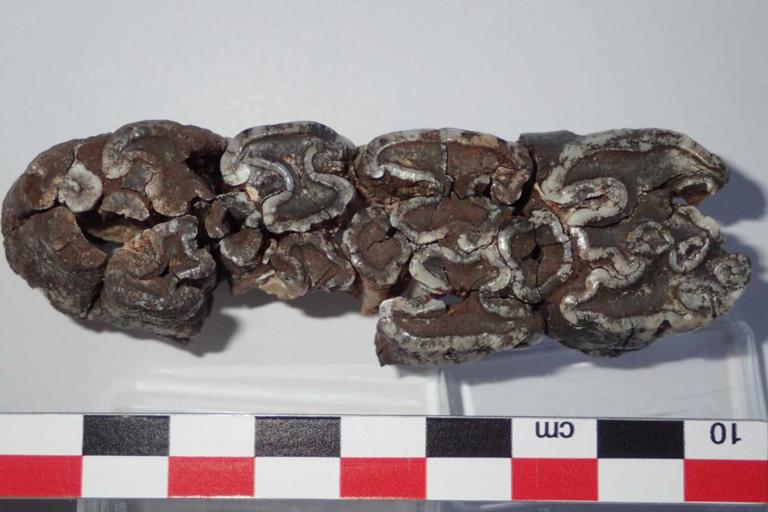
Molaire inférieure de Gerontochoerus koobiforaensis découverte en 2019 à Brad Pit A (Bolt’s Farm).
Studies depend on the nature of the fossils: microfauna, non-primate macrofauna and primates. They are carried out in laboratories in France (CR2P & ISTeP) and in South Africa (Ditsong: National Museum of Natural History and University of Johannesburg (UJ)).
The studies can be classical (descriptive, comparative and metric) and/or use techniques such as 3D digital reconstructions and geochemical analyses.
In 2022, the first students from the University of Johannesburg (UJ) were able to participate in our new field school to learn about the Bolt’s Farm fossil localities as well as the preparation laboratory set up by the project, the collections and the exhibition on Bolt’s Farm. These students will participate in the field activities as well as in the preparation of the material. The objective is to introduce our disciplines to South African students who do not usually have access to their heritage.
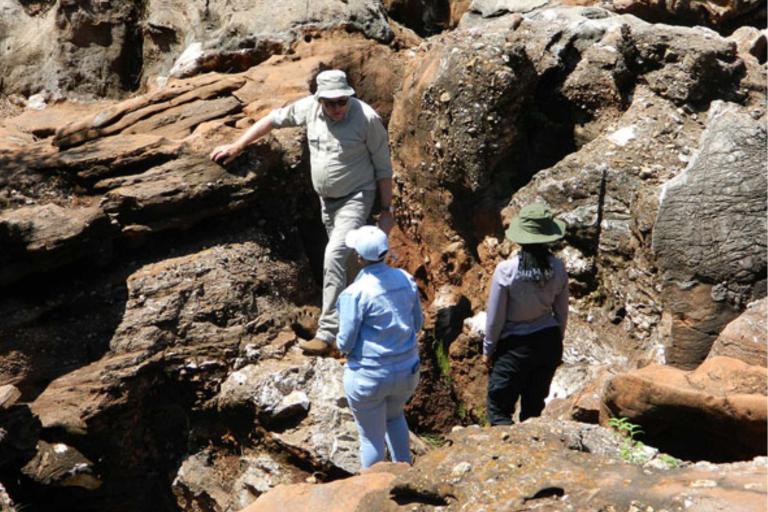
Chantier école avec des étudiantes de l’University of Johannesburg, octobre 2022, visite du locus d’Aves Cave I (Bolt’s Farm).
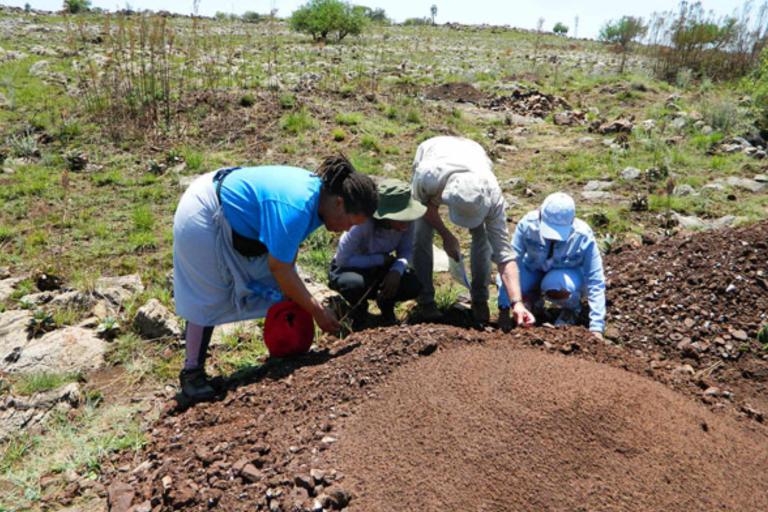
Chantier école avec des étudiantes de l’University of Johannesburg, octobre 2022, visite à Brad Pit (Bolt’s Farm) et examen des crassiers de fouilles (après un premier tamisage à sec).

Chantier école avec des étudiantes de l’University of Johannesburg, octobre 2022, visite à Milo A (Bolt’s Farm).
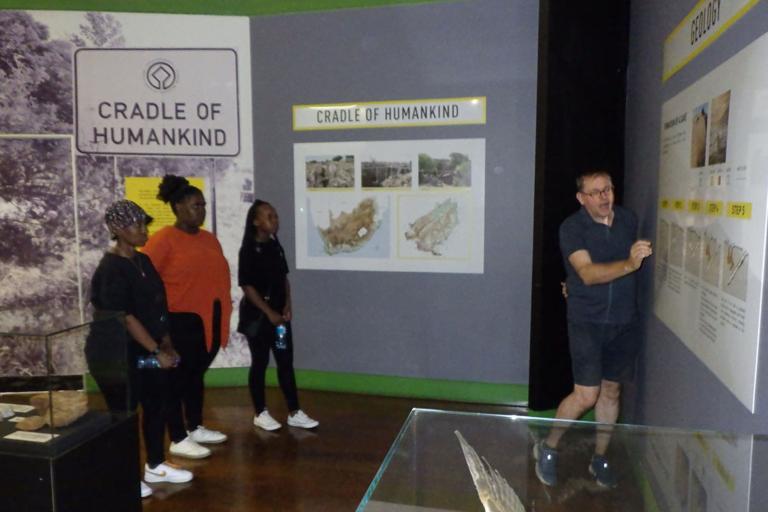
Chantier école avec des étudiantes de l’University of Johannesburg, octobre 2022, visite de l’exposition consacrée à Bolt’s Farm au Ditsong: National Museum of Natural History à Prétoria.
Project members have set up a permanent exhibition at the Ditsong: National Museum of Natural History, Pretoria, ‘The Fossil World of Bolt’s Farm. From field to exhibition’.
This exhibition is aimed at a wide audience, especially the younger generation of South Africans, in order to encourage them to take up our disciplines.
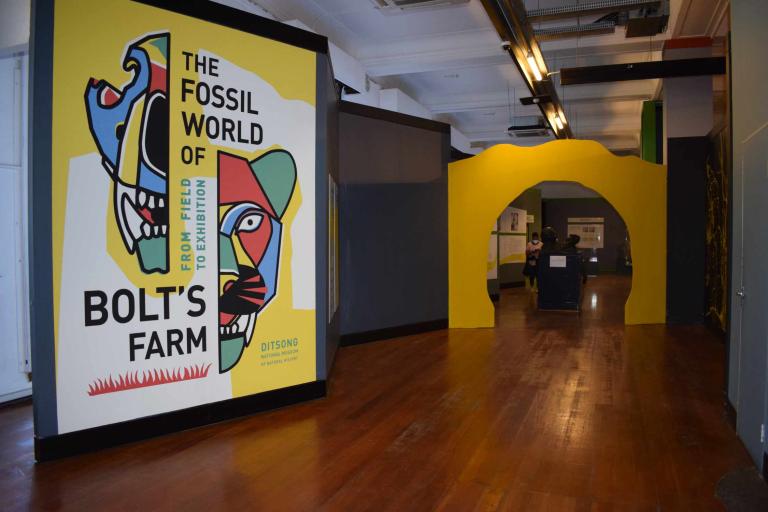
Entrée de l’exposition ‘The Fossil World of Bolt’s Farm. From field to exhibition’ au Ditsong: National Museum of Natural History – Prétoria.
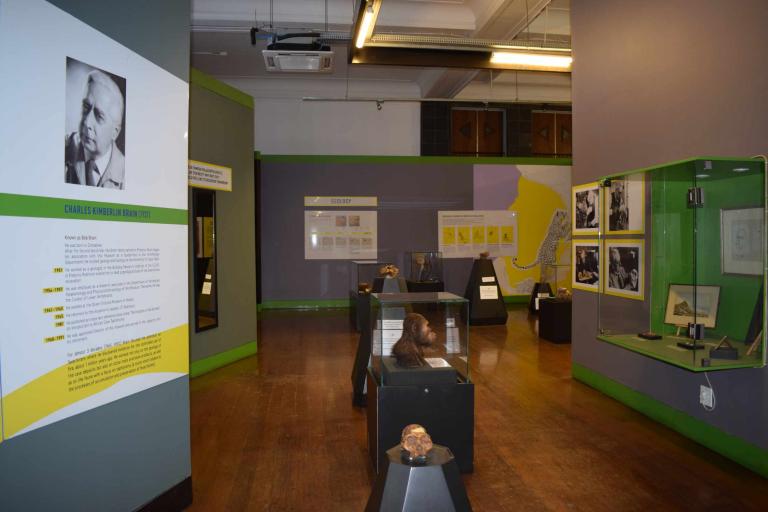
Détail d’une partie de l’exposition ‘The Fossil World of Bolt’s Farm. From field to exhibition’ au Ditsong: National Museum of Natural History – Prétoria.
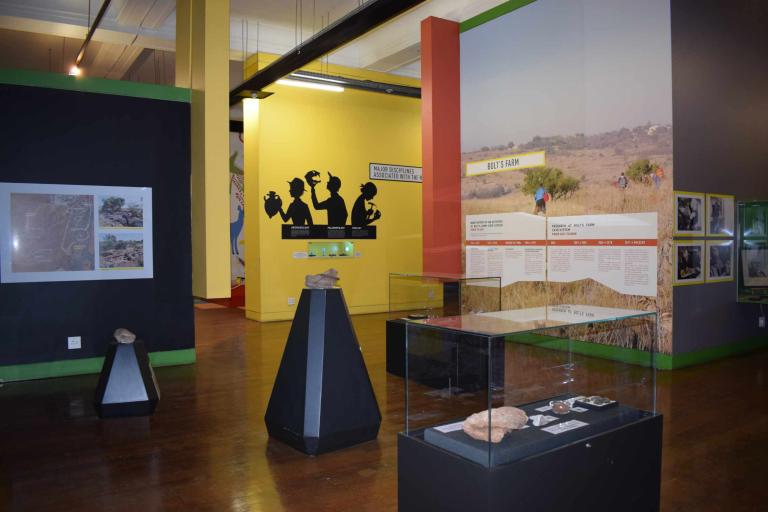
Détail d’une partie de l’exposition ‘The Fossil World of Bolt’s Farm. From field to exhibition’ au Ditsong: National Museum of Natural History – Prétoria.

Reconstitution d’un chantier de fouille dans l’exposition ‘The Fossil World of Bolt’s Farm. From field to exhibition’ au Ditsong: National Museum of Natural History – Prétoria.
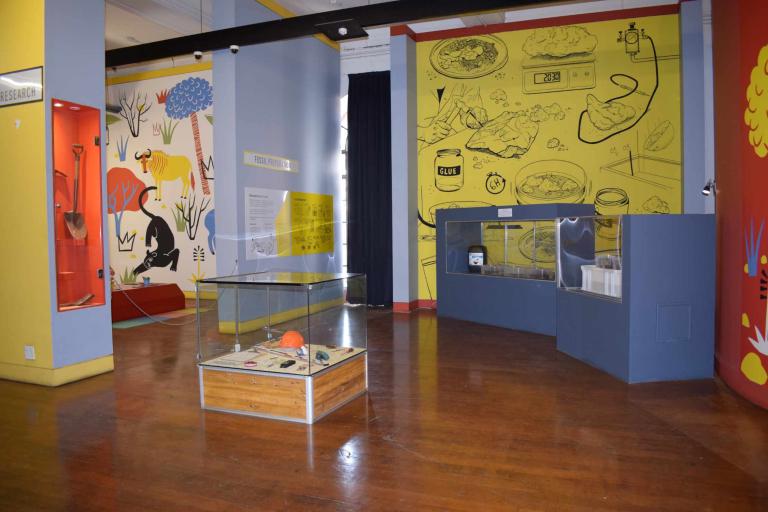
Partie dédiée aux techniques de préparation des fossiles dans l’exposition ‘The Fossil World of Bolt’s Farm. From field to exhibition’ au Ditsong: National Museum of Natural History – Prétoria.
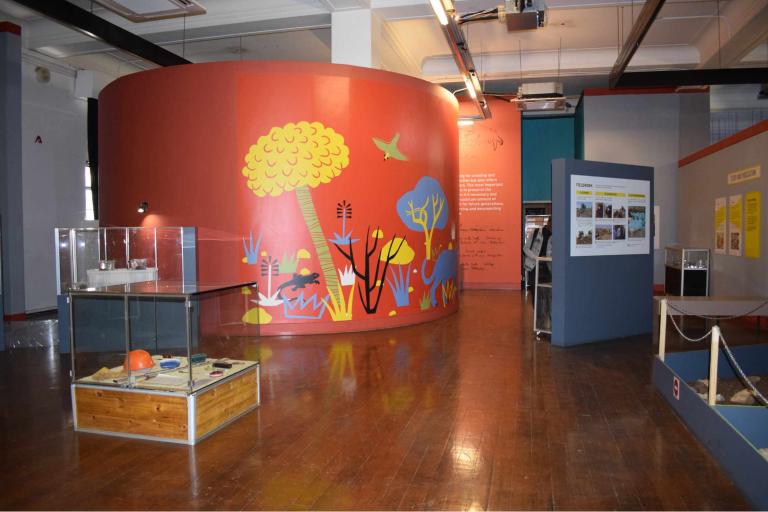
Détail d’une partie de l’exposition ‘The Fossil World of Bolt’s Farm. From field to exhibition’ au Ditsong: National Museum of Natural History – Prétoria.
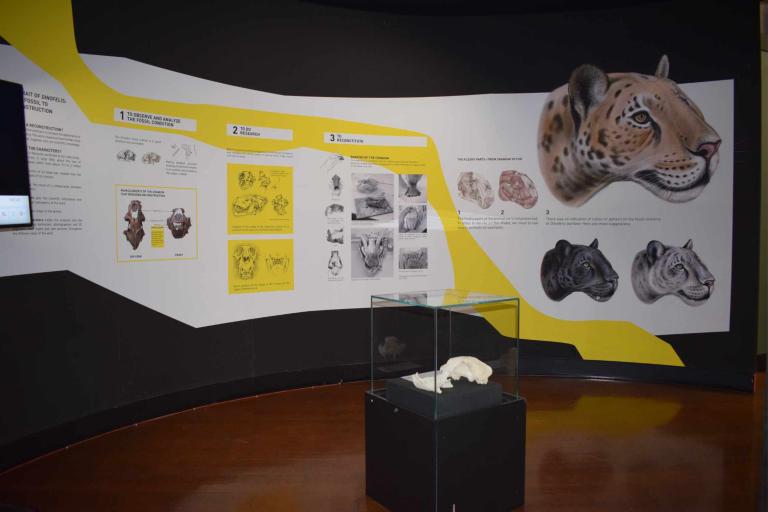
Partie dédiée à la reconstitution du Dinofelis, mascotte du projet, dans l’exposition ‘The Fossil World of Bolt’s Farm. From field to exhibition’ au Ditsong: National Museum of Natural History – Prétoria.
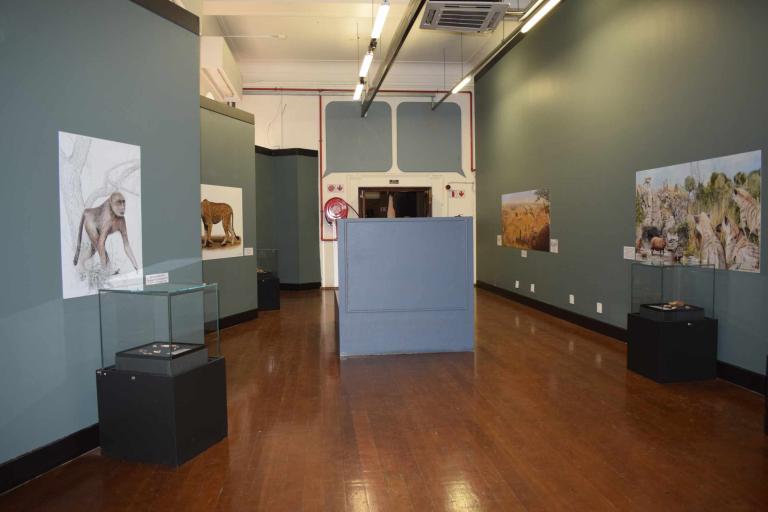
Partie présentant des fossiles originaux dans l’exposition ‘The Fossil World of Bolt’s Farm. From field to exhibition’ au Ditsong: National Museum of Natural History – Prétoria.
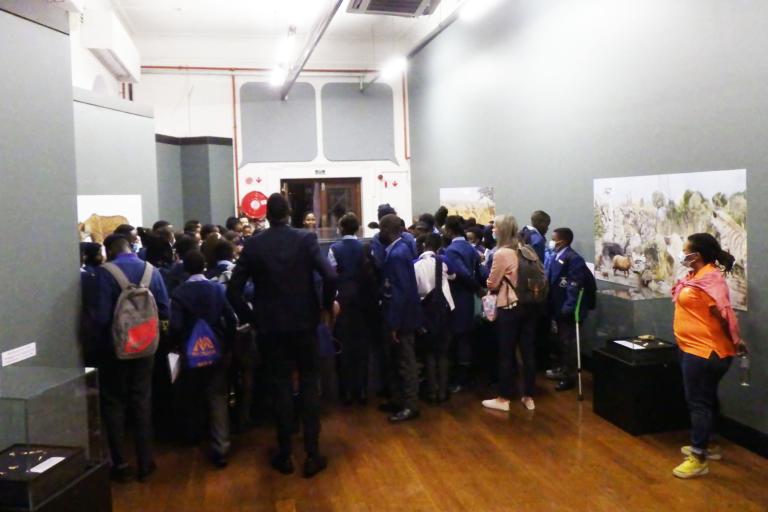
Une classe d’élèves sud-africains visitant la partie présentant des fossiles originaux dans l’exposition ‘The Fossil World of Bolt’s Farm. From field to exhibition’ au Ditsong: National Museum of Natural History – Prétoria.
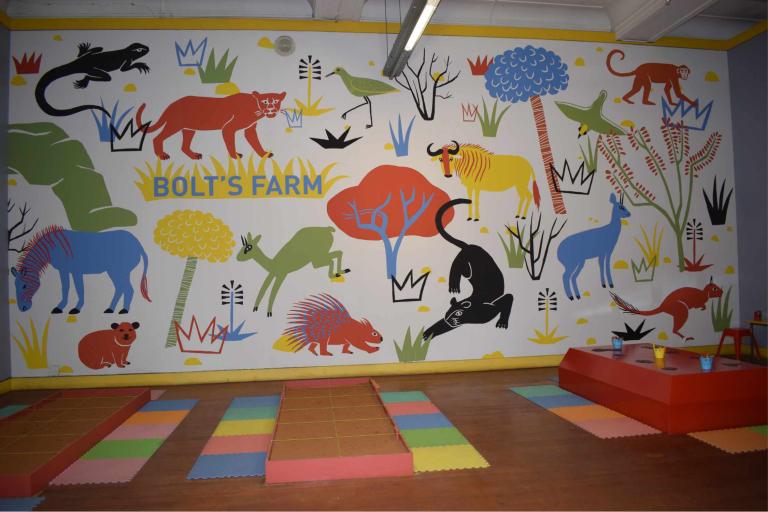
Détail de l’espace pédagogique de l’exposition ‘The Fossil World of Bolt’s Farm. From field to exhibition’ au Ditsong: National Museum of Natural History – Prétoria.
The research carried out within the HOMEN IRL and the MPFSA has been rewarded by the awarding to D. Gommery and N. Vilakazi of a “Tremplin de coopération bilatérale en recherche Afrique 2021” prize from the French Academy of Sciences and the French Ministry of Higher Education, Research and Innovation.
CR2P / Centre de recherche en Paléontologie – Paris/UMR 7207 (MNHN-CNRS-SU), France : Dominique Gommery, Frank Sénégas, Angelina Bastos, Lilian Cazes, Sophie Fernandez, Charlène Letenneur, Martin Pickford, Brigitte Senut, Renaud Vacant.
ISTeP / Institut des Sciences de la Terre de Paris/UMR 7193(SU-CNRS), France : Loïc Ségalen, Johann Schnyder.
University of Johannesburg, Aukland Park, Afrique du Sud : Nonny Vilakazi, Brian Kuhn.
Ditsong: National Museum of Natural History, Prétoria, Afrique du Sud : Lazarus Kgasi, Teresa Kearney.
The Franco-South African Paleoanthropological Mission is a French archaeological mission abroad funded by the Human and Social Sciences, Archaeology, Heritage Pole (Sub-Directorate of Higher Education and Research) of the Ministry of Europe and Foreign Affairs. Its activities are focused solely on the excavations of the Bolt’s Farm localities and have three objectives:
To increase the collections and to know the extension of the fills.
The study of the geology.
The study of biodiversity (including hominids) and paleoenvironments.
In addition to the members of the IRL HOMEN, it includes other colleagues from the UMR 7194-HNPH of the University of Perpignan Via Domitia (V. Pois) and from the University of Turin in Italy (M. Pavia).
https://www.ird.fr/projet-homen-evolution-de-la-biodiversite-au-plio-pleistocene
https://ditsong.org.za/en/2022/10/31/fieldwork-and-visit-by-dignitaries-and-students/